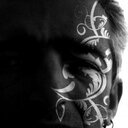The fort was originally named Ball (according to the village which was here before). After the death of Emperor Joseph II., Who on 3 October 1780 laid the foundation stone of strength, but was named in his honor Josefov. After the wars of the Austrian Succession Austria lost Silesia and Glatz, and the fortress had to be replaced. As previously upgraded Hradec Kralove strength was too far inland, was chosen to build a new fort at the Ball, and because the ball located on a natural hill, and the rivers that might be necessary in the event of spillage from the troughs. It would be impossible to approach enemy soldiers from the north and northwest. South and southeast of the fort was protected by an ingenious system of underground tunnels, whose length is estimated about 45 km. Strength was designed by Frenchman Claude Benoit Duhamel de Querlonde (* April 11, 1721 in Toul, † February 18, 1808 in Vienna). Because it was a military building, so obviously geared towards keeping military secrets. Troops that care was taken in order, found the carpenter Ignatius Pábila drawings strength, for which he was subsequently hanged. [Source?] Invited Kutná Hora miners take care of digging underground. The fort was completed in 1787. Later, however, to the west of France and created the revolutionary power and the strategic situation is completely changed. Strength is in the result was not used in any war. Closest to be in the war between Prussia and Austria, where troops launched a fortress gates and the water flooded the Josefov. Furthermore, demolished bridges and alleys fell, it did not provide the enemy to protect. The decisive battle of the war eventually broke out in 1866 at the Park. After the war, generally old fort lost its importance as a war strategy and weapons evolved. For enemy units were bad month long siege of the city well fortified fortress. Therefore such cities easily circumvented, and chose to battle for them strategically advantageous location (typical example is the aforementioned Battle Park). Although Josefov fortress lost status in 1888, on the character's strength is reflected here and the crew still remained. The walls have, however, did not keep one. Gradually, all were demolished fortress gates and bunkers discussed, including the most accessible part of the strength of corridors. In the 20th century most of the original fortifications variously modified and rebuilt for military and civilian use. These revisions were further devastation of some unique military buildings. Liquidation continues conurbation and in fact there is no real political power nor the will to save this unique strength building. During the First World War there was a prison camp along with the training ground conscripts. Then she worked Galician Army and the refugees from Ukraine. Then there was the internment camp in 1924, and later a military hospital. A large part of the original military buildings up to 1990 soldiers used the Czechoslovak and Soviet armies. After leaving the army, and passing into the hands of the city were targeted for further devastation and looting of equipment facilities, which further reduce their already low. Due to the vastness of most former military facilities is their revitalization very problematic (especially artillery barracks and military hospitals). After 2000 the problem surfaced neudržovaného subway system, which in many places threatens to collapse. More than 100 years of underground space have been repaired, while some were used as sewers. Due vytrhaným floors, a large number of smaller falls and drainage outlets, the ground waterlogged and there is caving in some corridors. That's worse is that the underground passages is residential houses. The least costly solution is to fill underground ash mixture, thus the system but were irretrievably lost. The second solution is to gradually repair the subway system, but which would be extremely costly (in this way after floods in 2002, the sister fortress Terezin).




